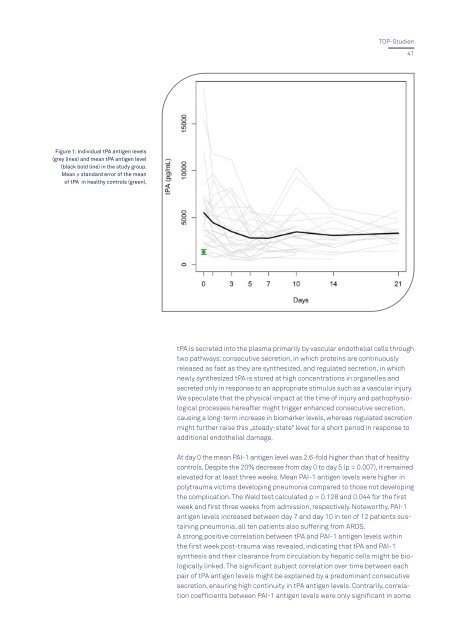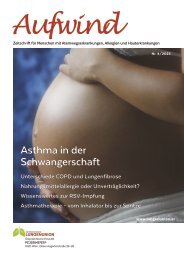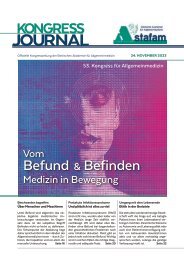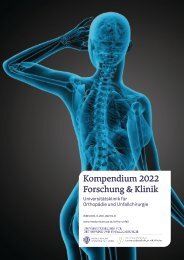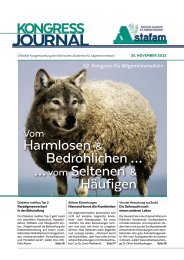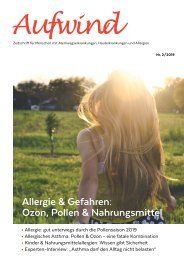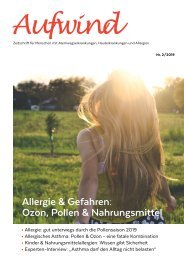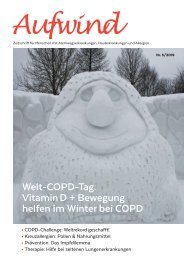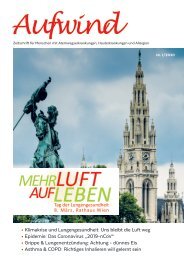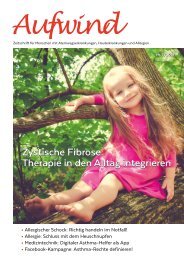Kompendium 2020 Forschung & Klinik
Das Kompendium 2020 der Universitätsklinik für Orthopädie und Unfallchirurgie von MedUni Wien und AKH Wien (o. Univ.-Prof. R. Windhager) stellt einen umfassenden Überblick über die medizinsichen Leistungen und auch die umfangreichen Forschungsfelder dar. Die Veröffentlichungen zeigen die klinische Relevanz und innovative Ansätze der einzelnen Forschungsrichtungen. Herausgeber: Universitätsklinik für Orthopädie und Unfallchirurgie MedUni Wien und AKH Wien Prof. Dr. R. Windhager ISBN 978-3-200-07715-7
Das Kompendium 2020 der Universitätsklinik für Orthopädie und Unfallchirurgie von MedUni Wien und AKH Wien (o. Univ.-Prof. R. Windhager) stellt einen umfassenden Überblick über die medizinsichen Leistungen und auch die umfangreichen Forschungsfelder dar. Die Veröffentlichungen zeigen die klinische Relevanz und innovative Ansätze der einzelnen Forschungsrichtungen.
Herausgeber: Universitätsklinik für Orthopädie und Unfallchirurgie
MedUni Wien und AKH Wien
Prof. Dr. R. Windhager
ISBN 978-3-200-07715-7
You also want an ePaper? Increase the reach of your titles
YUMPU automatically turns print PDFs into web optimized ePapers that Google loves.
TOP-Studien<br />
41<br />
Figure 1: Individual tPA antigen levels<br />
(grey lines) and mean tPA antigen level<br />
(black bold line) in the study group.<br />
Mean ± standard error of the mean<br />
of tPA in healthy controls (green).<br />
tPA is secreted into the plasma primarily by vascular endothelial cells through<br />
two pathways: consecutive secretion, in which proteins are continuously<br />
released as fast as they are synthesized, and regulated secretion, in which<br />
newly synthesized tPA is stored at high concentrations in organelles and<br />
secreted only in response to an appropriate stimulus such as a vascular injury.<br />
We speculate that the physical impact at the time of injury and pathophysiological<br />
processes hereafter might trigger enhanced consecutive secretion,<br />
causing a long-term increase in biomarker levels, whereas regulated secretion<br />
might further raise this „steady-state“ level for a short period in response to<br />
additional endothelial damage.<br />
At day 0 the mean PAI-1 antigen level was 2.6-fold higher than that of healthy<br />
controls. Despite the 20% decrease from day 0 to day 5 (p = 0.007), it remained<br />
elevated for at least three weeks. Mean PAI-1 antigen levels were higher in<br />
poly trauma victims developing pneumonia compared to those not developing<br />
the complication. The Wald test calculated p = 0.128 and 0.044 for the first<br />
week and first three weeks from admission, respectively. Noteworthy, PAI-1<br />
antigen levels increased between day 7 and day 10 in ten of 12 patients sustaining<br />
pneumonia, all ten patients also suffering from ARDS.<br />
A strong positive correlation between tPA and PAI-1 antigen levels within<br />
the first week post-trauma was revealed, indicating that tPA and PAI-1<br />
synthesis and their clearance from circulation by hepatic cells might be biologically<br />
linked. The significant subject correlation over time between each<br />
pair of tPA antigen levels might be explained by a predominant consecutive<br />
secretion, ensuring high continuity in tPA antigen levels. Contrarily, correlation<br />
coefficients between PAI-1 antigen levels were only significant in some


